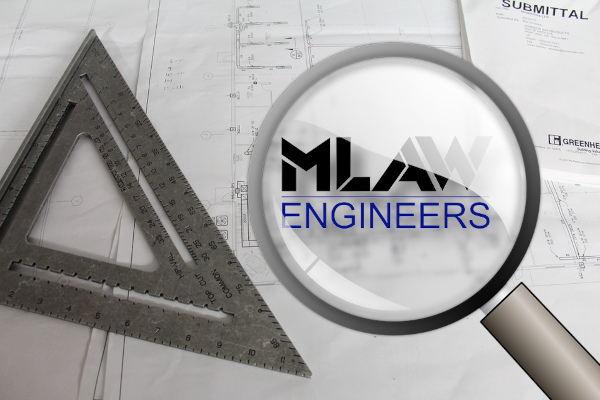Featured Article
Shrinkage cracks in concrete slab-on-ground foundations are a significant public relations problem to home builders. All concrete will shrink during the curing process which lasts up to a year after the time concrete is placed in the forms. Curing involves loss of water from within the concrete, both when it is in a plastic state as well as a solid state. The loss of water causes a reduction in volume to occur which translates into shrinkage. Shrinkage generates tension within the concrete until at some point concrete will separate yielding a shrinkage crack.
Homeowners and builders are frequently very concerned to see the cracking in a brand new slab foundation. Post-tensioned foundations are particularly susceptible to this problem because, until the stressing is applied to the post-tensioned cables, there is no reinforcement in these slabs. This is usually one to two weeks after the concrete is placed. By that time, shrinkage may have generated cracks, some very fine and almost invisible and some of significant size. Variables include the humidity, wind speed and temperature, as well as the amount of water in the initial mix.
Shrinkage cracks are generally only a cosmetic or appearance problem and usually do not indicate a structural distress situation. Various methods are utilized to reduce the shrinkage of concrete. However, only the use of special chemical expanding cement will eliminate it. Some of the more typical methods include control joints, reinforcement, special mix designs to reduce water content, fiber mesh reinforcement and controlled curing. All of these procedures are important and could be used to one extent or another on a particular job.
Control joints can be effective but it is usually not convenient to break up a foundation slab into small enough units to absorb all the shrinkage. Control joints are, in essence, pre-designed shrinkage cracks. Mix designs should always be configured to use the least amount of mix water commensurate with proper workability and finishing. Water reducing admixtures aid this goal, as well as not placing the concrete too wet.
One procedure which MLAW Engineers has found to be very helpful and cost effective is the use of partial pre-stressing applied when the concrete is between one and two days old. This method puts some compressive force across the concrete section and tends to counteract the tendency for tensile forces to build up due to shrinkage. Our typical specification calls for 40% of stressing load to be applied within 24 to 48 hours of concrete placement. The final stressing will be carried out at the usual time, usually within a week after concrete placement.
A review of over 800 foundation slabs constructed from plans prepared by this office over an eight month time period in 2004 revealed that not one shrinkage crack investigation was required for any slab that was known to be partially pre-stressed. However, out of the 800 there were 42 call backs for shrinkage crack investigation reports. None of these had been partially stressed as described above.
In my opinion, this is a very useful way to eliminate a very vexing problem and even permit some reduction in mild steel placements that have previously been used in an effort to reduce the shrinkage crack problem.
Kirby T. Meyer, P.E.
MLAW Consultants & Engineers
Originally published in MLAW Newletter, March 2004

Explore
Balconies, Stairs and Landings
Of the various types of balconies, the overhanging or cantilever types are potentially the most dangerous. Balconies can be found on single family dwellings, but most frequently are found in condominiums or apartments. A balcony can totally collapse if it becomes structurally unsound. Many deaths and serious injuries have resulted from collapse. Balcony live loadings…
Read MoreSteel Framing for Residences
Steel structural framing has been used for many years in commercial construction. It is only used rarely for residential construction. The main reason appears to be that “it has always been done that way”. Another reason is probably that homebuilders do not have access to subcontractors who are familiar with utilizing steel as a construction…
Read More
